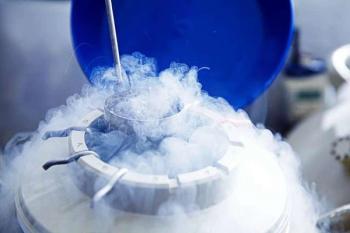
NSAIDs Relatively Safe in Pregnancy, Though Linked to Some Specific Birth Defects
Nonsteroidal antiinflammatory drugs are relatively safe during pregnancy, according to new research published in the American Journal of Obstetrics and Gynecology.
Nonsteroidal antiinflammatory drugs are relatively safe during pregnancy, according to new research published in the American Journal of Obstetrics and Gynecology.
Although NSAIDs are widely used during pregnancy, there have been only a few large-scale studies examining the relative safety and potential risks associated with the use of these medications during pregnancy. To help further understand the safety profile, Dr. Rohini K. Hernandez, from the Center for Birth Defects Research and Prevention, Massachusetts Department of Public Health, Boston, and colleagues looked at data from the National Birth Defects Prevention Study, an ongoing multisite, population-based, case-control surveillance study. For this analysis, Hernandez and colleagues sorted NSAIDs use into three categories: exposure in the first trimester (N= 3,173), exposure on an as-needed basis (N= 1,452), and unexposed at any time during pregnancy (N= 15,836). Breakdown of NSAIDs use can be found in the Figure.
Figure. Types of NSAIDS Used During Pregnancy (click to full size)
Clinical geneticists reviewed outcome data, and odds ratios and relative risks were calculated. Hernandez et al. found that use of NSAIDs was indeed associated with some birth defects. The strongest and most complications were found for anophthalmia/microphthalmia, with adjusted odds ratios of 3.0, 1.9, and 2.8 for aspirin, ibuprofen, and naproxen exposure, respectively. Other increased risks were found for neural tube defects and oral clefts for ibuprofen, aspirin, and naproxen. Interestingly, Hernandez et al. noted that each agent was associated with different neural tube defect and oral cleft types. Other associations included pulmonary valve stenosis (for exposure to naproxen only) and amniotic band/limb body wall complex (for aspirin and ibuprofen exposure). Hernandez and colleagues also found that the relative risk estimates for women with “as needed” exposure to NSAIDs was nearly identical to women who were classified in the first trimester exposure group. Despite these associations, the researchers noted that most of the defects found were not associated with NSAID use.
“The use of NSAIDs in early pregnancy does not appear to be a major risk factor for birth defects, although there were a few moderate associations between NSAIDs and specific birth defects,” Hernandez and colleagues concluded. “Because these associations have not been reported previously from other datasets (with the exception of naproxen and cleft lip with or without cleft palate), further studies with detailed data on timing, frequency, dose, and indication are necessary.”
Related Content
References:
Hernandez RK, Werler MM, Romitti P, et al. Nonsteroidal anti-inflammatory drug use among women and the risk of birth defects. Am J Obstet Gynecol. 2012;206(3):228.e1-8
Newsletter
Get the latest clinical updates, case studies, and expert commentary in obstetric and gynecologic care. Sign up now to stay informed.
















